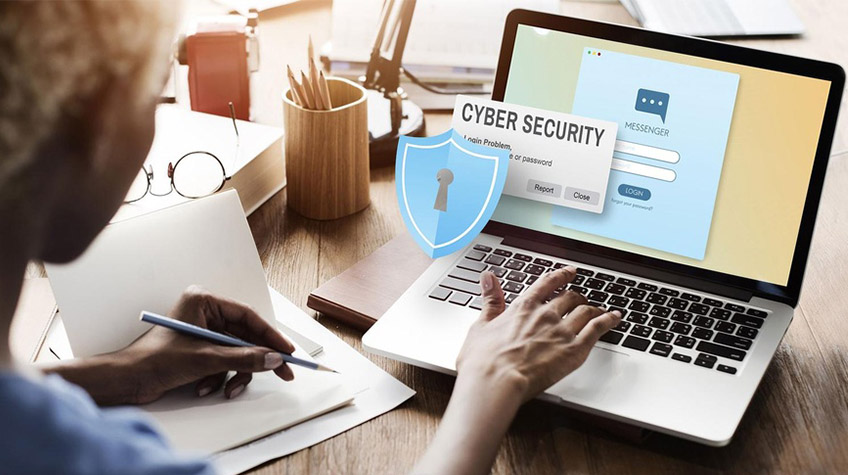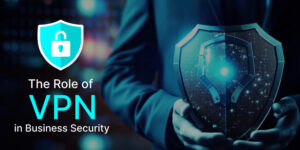
Remote work has been on the rise, especially during the COVID-19 pandemic where people were ordered to stay home and social distance. Many companies have opted to make their positions remote, so that business can go on despite the big change.
But with that said, security is top priority when it comes to being online. That means that, when you take up remote work, you’ll need to practice safe practices on your computer (or whatever device you use for your job). Why? Because cyber-attacks are more evident these days. Such attacks, according to WeeTech Solution, include the following:
- Malware
- Phishing
- Denial-of-service (DoS) attack
- Structured Query Language (SQL) Injection
- Man-in-the-middle (eavesdropping) attack, AND
- DNS tunneling
So, if you’re looking for the best and safest experience in your remote work, then you’ve come to the right place! In this essential guide, we’ll you 5 of the most common cybersecurity mistakes that many remote workers tend to make, and how you can avoid them at all costs.
1. Opening Suspicious Links And Attachments In Emails
Cybercriminals are pulling out all the stops these days. One of their most used and malicious tactics to date are sending unsuspecting online users emails that contain questionable links and attachments. With said links and attachments, cybercriminals would entice users to click and open them… only to give the users’ devices a virus or malware. Such links and attachments can also show up in video conferencing platforms (i.e., Microsoft Teams, Slack, etc.) in the chat boxes, causing chaos for users during, say, an important work meeting.
Therefore, never click on suspicious links; and never open suspicious attachments in emails. Also, never interact with said links and attachments in video conferencing platforms.
2. Using The Wrong Apps And Software
Nowadays, many apps and software are in the digital market. With a diverse landscape online, there are so many apps and software to choose from, that it can be challenging to find the “right one.”
Say that you want to download a collaboration tool. However, with so many collaboration tools on the market, you decide to download the latest tool that’s been getting a lot of buzz on the Internet and in the media. But this that tool going to help you on an individual basis? In other words, is that tool right for you after all?
Plus, your business might have you using a different tool, other than the so-called “fan favorite.” In fact, your company should tell you which apps and software that they approve, and which ones to avoid during the job. This is all due to privacy concerns, because when you work for a company, the company’s data and going-ons are between you and the company alone, especially if you work for, say, a government entity.
Working for private and government sectors entails managing data. Traditional data backup solutions aren’t enough if you handle huge amounts of data. More often than not, they’re only suitable for backing up individual file systems, records, and emails. The better alternative would be a real-time server backup solution with comprehensive file protection and fast recovery features.
Choosing the right software to store and back up your data is crucial to cybersecurity. So, what you need to do is to find a fast, secure, and reliable file sync, sharing, and data backup solution to avoid unauthorized access and data breach. A next-generation software utilizes peer-to-peer server synchronization architecture with different configurations that work on any connectivity type and operating system.
3. Not Securing Computers, Devices, And Apps
Imagine having a brick-and-mortar shop. You wouldn’t leave the door open to your shop at closing time, right? After business hours, you would lock up your shop, so that no one can get inside. That same logic applies to your computers, devices, and apps.
Not securing your computers, devices, and apps can leave the door open for cybercriminals to access your stuff without your knowledge. Plus, when your remote work “establishment” is “vandalized” by cybercriminals, that can cost your company money and reputation, thus costing your job.
So, it’s important to make sure that your computers, devices, and apps are secure 24/7. Again, like a brick-and-mortar shop, it’s important to “lock up” your stuff, so that you don’t leave the door open for cybercriminals. With that in mind, consider the following security processes that you should implement right away:
- Secure logins (i.e. strong passwords)
- Physical tokens
- 2-step authentication
- Closing (locking) computers and devices during inactivity, AND
- Logging out when you’re done working
Plus, consider using VPN tools like NordVPN, so that your data and connections are kept away from the prying eyes of cybercriminals. There are also remote access VPN that provides remote workplaces with many benefits, including real-time access to information, productivity boost, data security, blocked website access, and affordability.
4. Leaving Advanced Security Settings Turned Off
Do you have your advanced security settings turned on in your computer and devices? If not, then please take a moment to do so.
With things like the Cloud and many web-based applications are hitting the scene these days on computers and devices, they have unintentionally become a gold mine for cybercriminals. The situation is worsened whenever users have their advanced security settings turned off.
So, keep in mind that configuring your advanced security settings is important, even if you feel that the settings are on default. It’s important to check every so often to see if whether your advanced security settings are on. Plus, don’t turn them off, if a suspicious email or message tells you to do so to access a certain piece of content. (Chances are, those asking you to turn off your settings might be bad actors online.)
And, as always, if you’re not sure how to navigate through your advanced security settings on your computer or device, then don’t be afraid to ask your company’s IT team for help.
5. Not Conducting Regular Updates
Finally, update, update, update!
While this may seem commonplace for phones, you’ll also need to update your computer and other devices that you use for remote work. The last thing you want is to use apps and software that are outdated, which can hinder your progress in your remote work. And, outdated apps and software can be incredibly vulnerable to malware, which can halt your progress for who knows how long!
So, to avoid the risk of using (and falling victim to) buggy and outdated apps and software, be sure to update your computers and devices, along with the apps and software you use often for your work.
Update your computer’s software at least once a month. Manufacturers and solution providers discover security flaws and make program enhancements to address issues. Hence, they release updates to ensure everyone who uses their products to experience seamless and secure operations. So, call your software and hardware providers now to determine their recommended updates for your business tools and systems.
Conclusion
So, you see, cyber risks are happening all the time, especially when it comes to remote work. Many of these risks can even damage your computer/device, along with your company’s reputation. Needless to say, the described mistakes are not worth the risks!
By avoiding these 5 common mistakes in remote work security, you’ll be safe in your remote work endeavors. Not only will you be thankful for well-running devices and apps, but your company will also thank you for it!
We wish you the best of luck, remote staff!
Bio: Christina Lee is a writer and editor at Research paper writing service. As a project manager, she has overseen various projects in many companies across the country. As a content writer, she writes articles about remote work, social media marketing, and viral trends.






